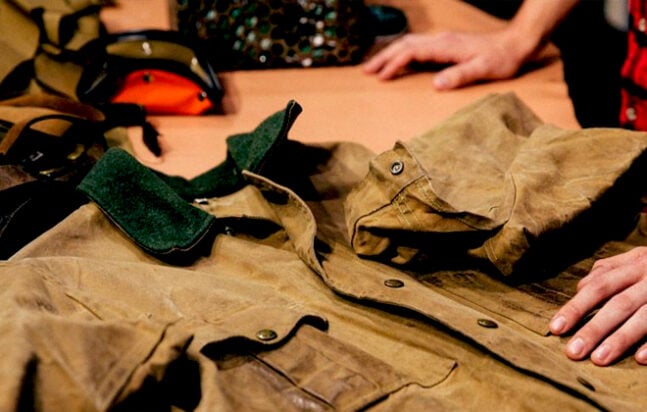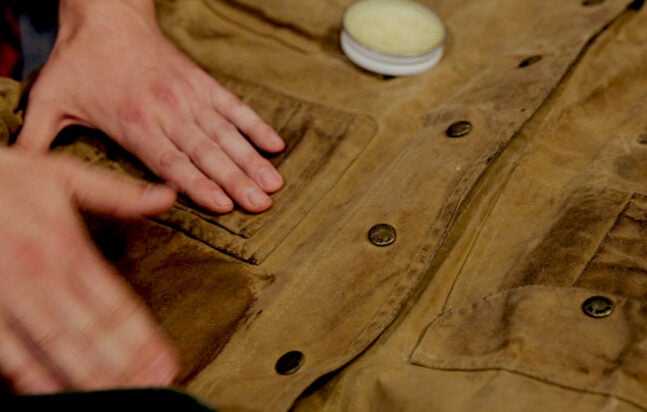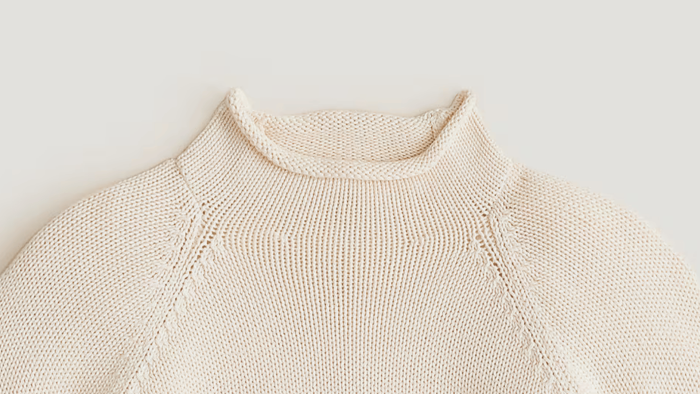Your canvas jacket is more than just a piece of clothing; it’s an investment in your warmth and style, and you want that investment to last for years. The best way to ensure your jacket stays in top shape is by waxing and re-waxing it regularly. Not only does waxing give it a fresh look, but it also helps keep water out, making it perfect for any outdoor adventure. From selecting the right wax to cleaning your jacket, melting the wax for application, to letting the jacket dry after waxing, we’ve got you covered.
Tools you’ll need
To efficiently wax your jacket, gather essential tools like a heat gun, hairdryer, sponge, and rag for wax application. You’ll also need a Barbour wax tin or organic wax bar for melting and application. Preparing a warm, well-lit workspace is crucial, along with having a clean, lint-free rag for buffing the jacket after waxing. The right tools play a pivotal role in achieving a successful waxing outcome.
Materials Needed:
- Canvas jacket
- Wax (paraffin, beeswax, or a specialized fabric wax)
- Hairdryer or heat gun
- Soft cloth or brush
- Optional: A heat-resistant bowl or container
Selecting the Right Wax: Paraffin vs Organic
When choosing the right wax for your jacket, consider its specific needs. Paraffin wax is petroleum based and offers high water resistance with a long shelf life at a cheaper price, while organic wax provides a more natural waterproofing option and is better for the environment. The choice between paraffin and organic wax depends on the desired level of waterproofing and can impact the effectiveness of your jacket’s waterproofing. Both waxes have unique benefits and applications, so there is no fast rule in selecting one over the other.
Cleaning Your Jacket Before Waxing
Begin by delicately removing any excess dirt or grime with a soft cloth, preparing the jacket for the waxing process. Hand wash the jacket in cold water using a mild detergent to eliminate stubborn stains without damaging the fabric. Avoid using a washing machine, which can harm the material. Ensure the jacket is thoroughly dry before proceeding with the waxing process to achieve optimal results in waterproofing.
Melting the Wax For Application
Melting the wax for application involves using a heat gun or hair dryer to reach a liquid state. It’s crucial not to overheat the wax and ensure a smooth consistency. Stirring occasionally ensures even texture and heat distribution, vital for a successful waxing process. Achieving the right consistency is essential for effectively waxing your garment.
How to Apply the Wax on the Jacket
Begin by evenly applying the first coat of wax to the jacket, ensuring comprehensive coverage. Use a sponge or rag to evenly spread the wax on the fabric, focusing on one section at a time. Apply multiple coats of wax, allowing each layer to dry before adding another. Then, follow these steps:
- Spread and Work the Wax: Use the brush or cloth to spread the wax and work it into the fabric. The goal is to ensure that the wax penetrates the fibers, providing a protective coating.
- Remove Excess Wax: If you notice any excess wax, use a clean cloth to wipe it away. This helps avoid a sticky or overly waxy finish.
- Heat-Set the Wax: Use a hair dryer or heat gun to heat-set the wax. The heat helps the wax penetrate the fabric fibers, making the jacket more water-resistant. Keep the heat source at a safe distance to prevent overheating.
Letting the Jacket Dry After Waxing
After waxing, hang the jacket in a warm area for the wax to penetrate the fabric. Air-drying is crucial for optimal water resistance. Avoid direct heat sources to prevent the wax from melting off. Once dry, gently rub the jacket to remove excess wax and reveal a smooth finish. This process ensures the durability of the waxed fabric and waterproof clothing.
Buff the Jacket (Optional)
If you want a smoother finish, you can use a soft cloth to buff the jacket once the wax has fully cured. Now your canvas jacket should be ready to handle the elements while maintaining a distinctive and weathered appearance. Keep in mind that waxed jackets may develop a patina over time, adding to their character.
When Should I Re-wax My Jacket?
To maintain water resistance, re-wax your jacket when you notice a decline in its protective properties. This is especially important after prolonged use or exposure to harsh conditions. Regularly assess the condition of your jacket and pay attention to high-friction areas that may require more frequent re-waxing.






